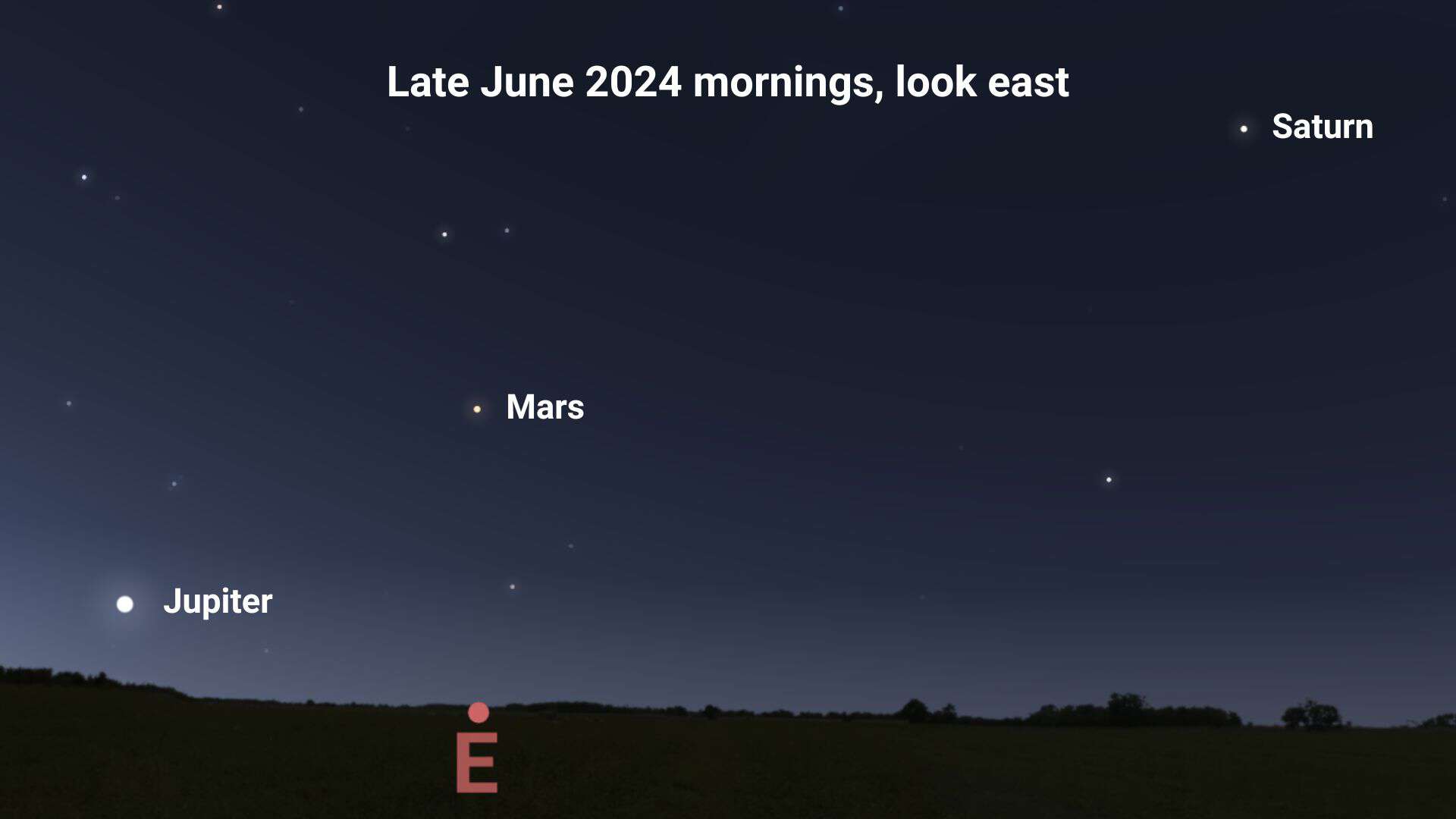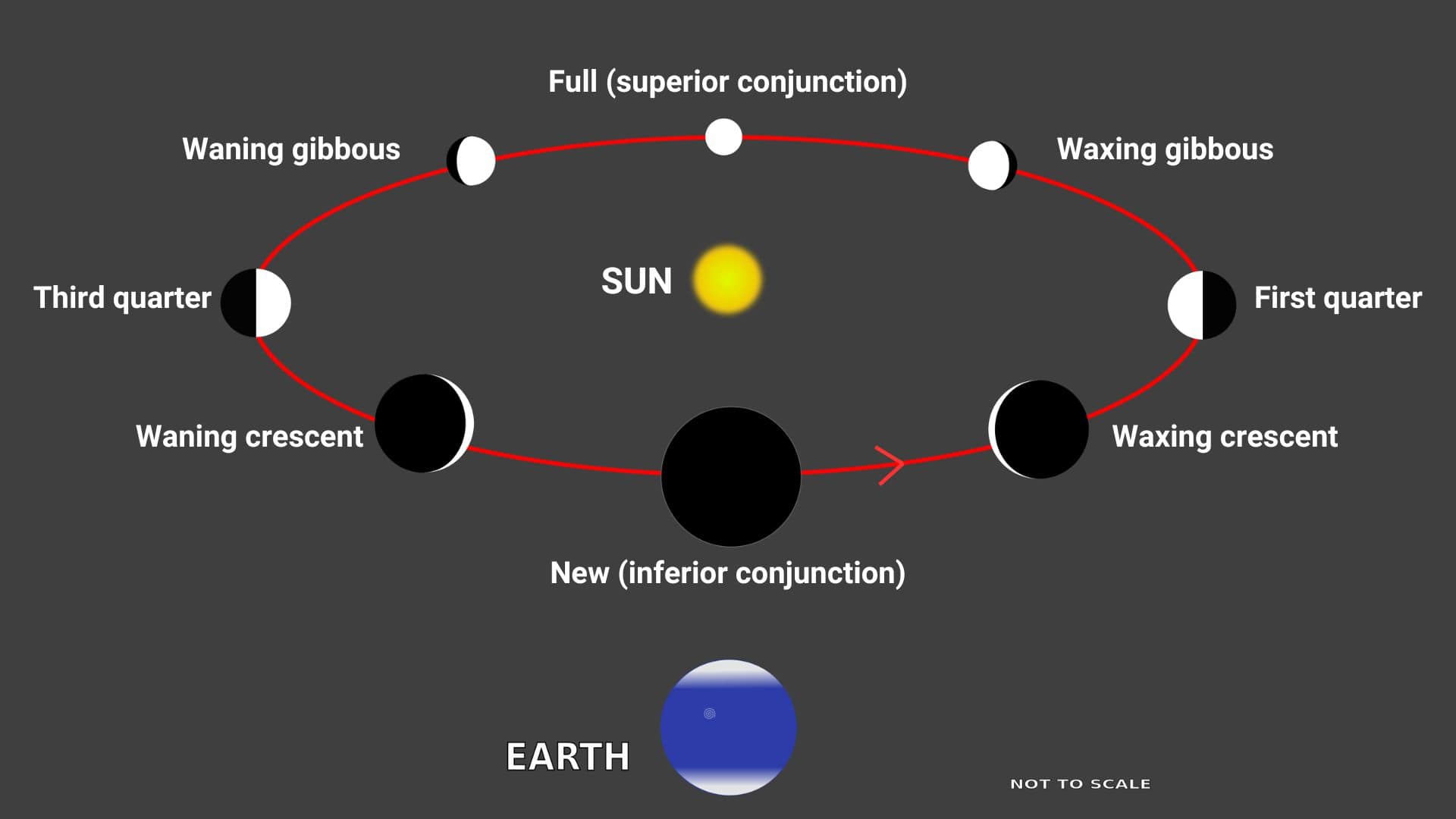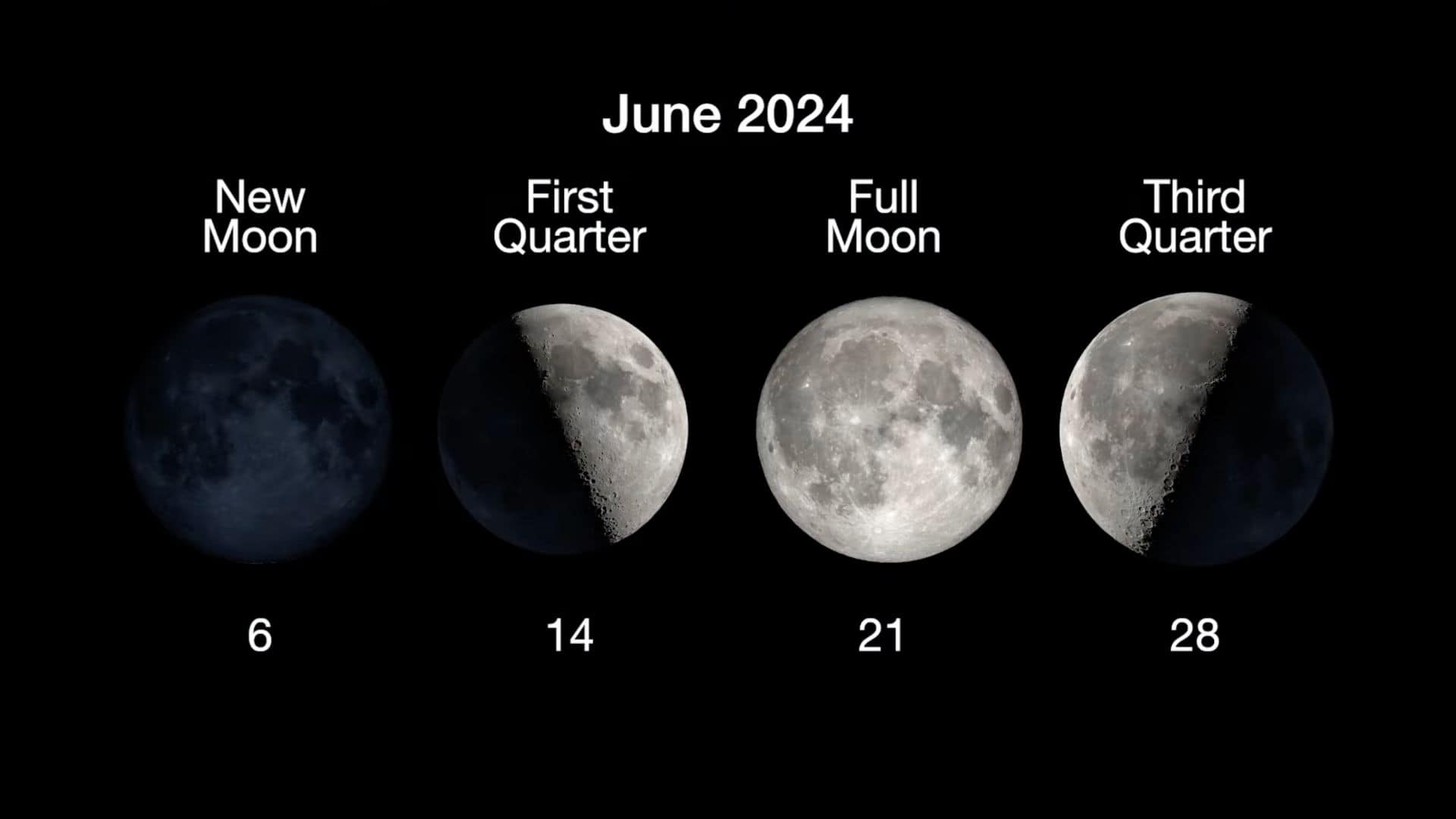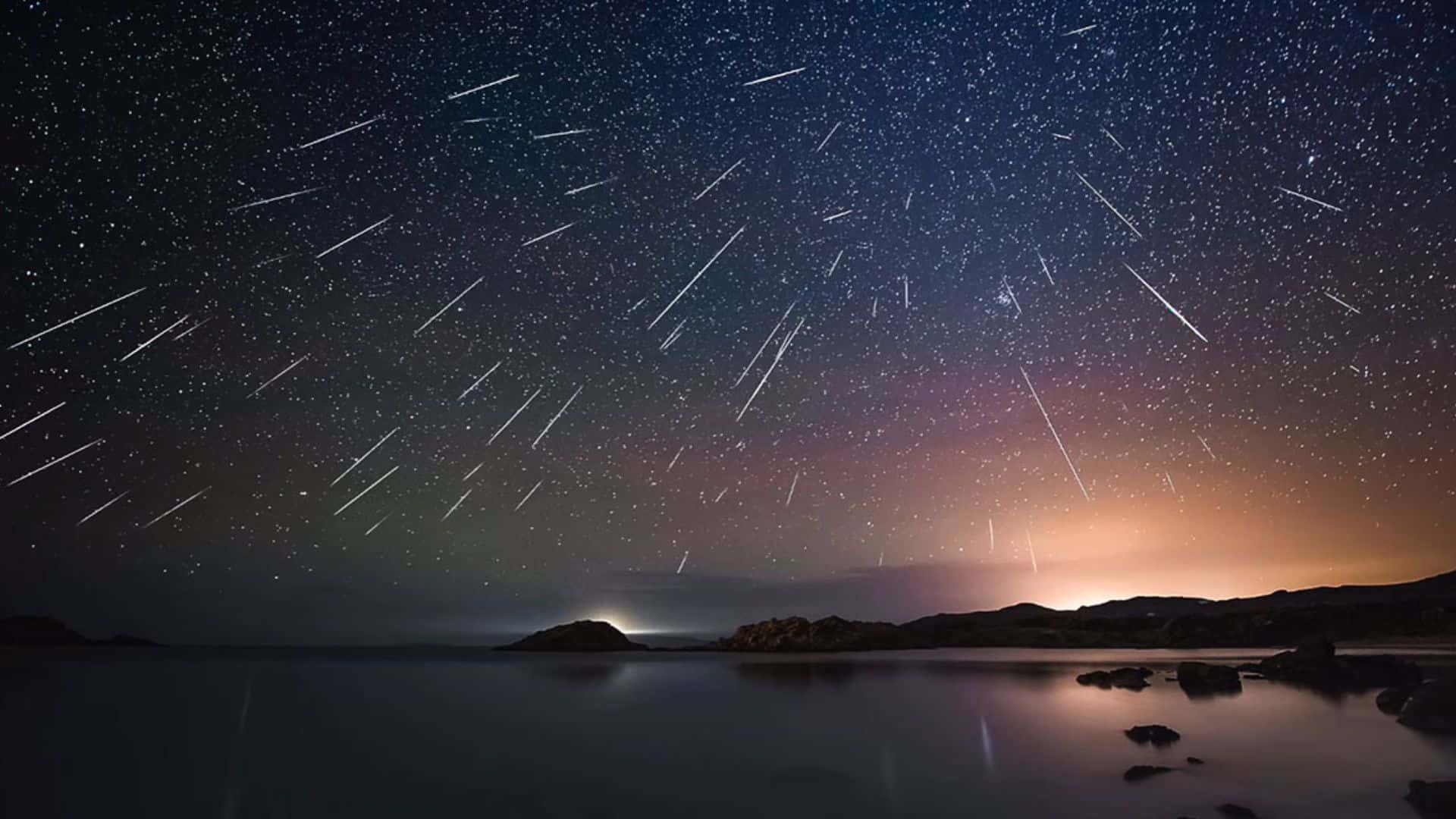In astronomy, it is called the conjunction of the planet and moon when they meet on our sky’s dome.
The moon will meet Mars on the morning of July 1, Jupiter on the morning of July 3, Mercury on the evening of July 7, and Saturn on the mornings of July 24 and 25. Details are given below.
Mars next to the moon on the morning of July 1
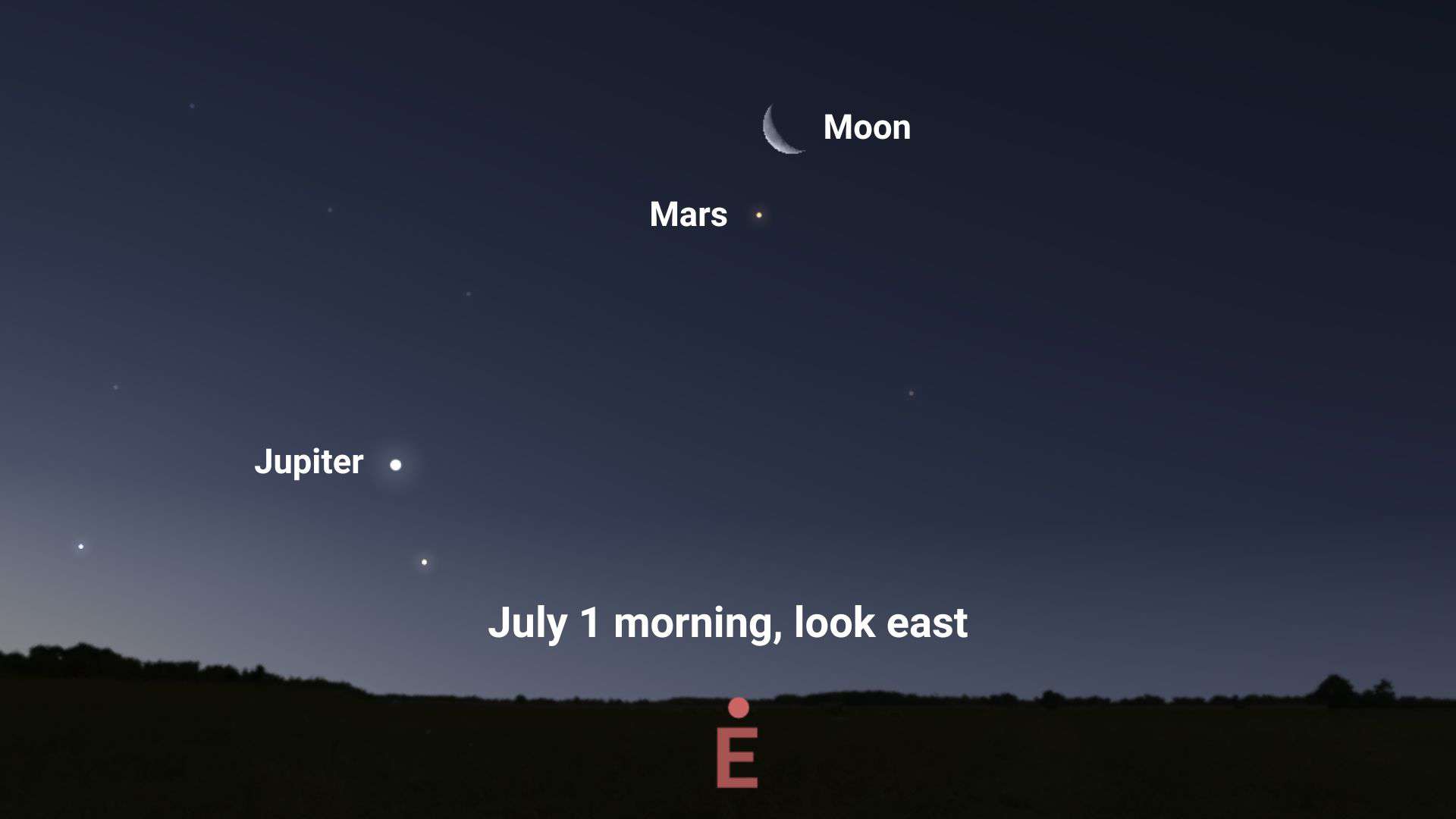
Mars will be visible very close to the 23% illuminated waning crescent moon on the morning of July 1, 2024.
The moon and Mars will rise together in the pre-dawn hours of July 1, 2024. So look low in the eastern sky in the early morning hours preceding sunrise to see the moon and Mars.
Mars looks reddish in the sky due to the presence of a huge amount of iron oxide on its surface.
You will see not only Mars but also Jupiter on the morning of July 1, 2024. Jupiter will be visible to the lower left of the moon and Mars duo.
Jupiter next to the moon on the morning of July 3
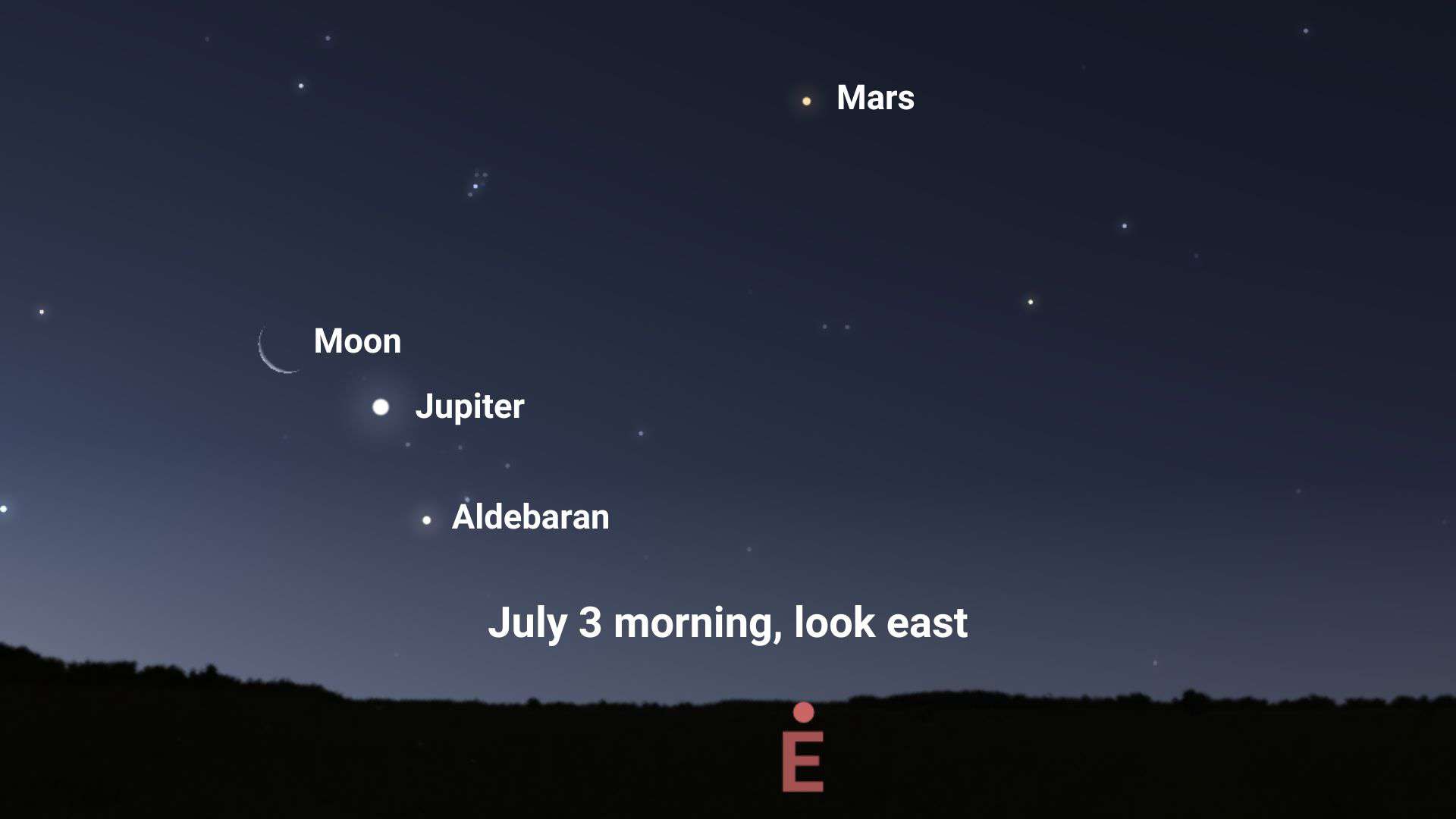
Jupiter will be visible very close to the 8% illuminated waning crescent moon on the morning of July 3, 2024.
The moon and Jupiter will rise together in the pre-dawn hours of July 3, 2024. So look low in the eastern sky in the early morning hours preceding sunrise to see the moon and Jupiter.
Jupiter will be the brightest object in the morning sky except the moon. It will shine with a magnitude of -1.9 on the morning of July 3, 2024.
The reddish Aldebaran star, also called the Bull’s Eye, will be seen below the moon and Jupiter duo on the morning of July 3, 2024. Aldebaran is the brightest star in the constellation Taurus, the Bull.
Mercury next to the moon on the evening of July 7
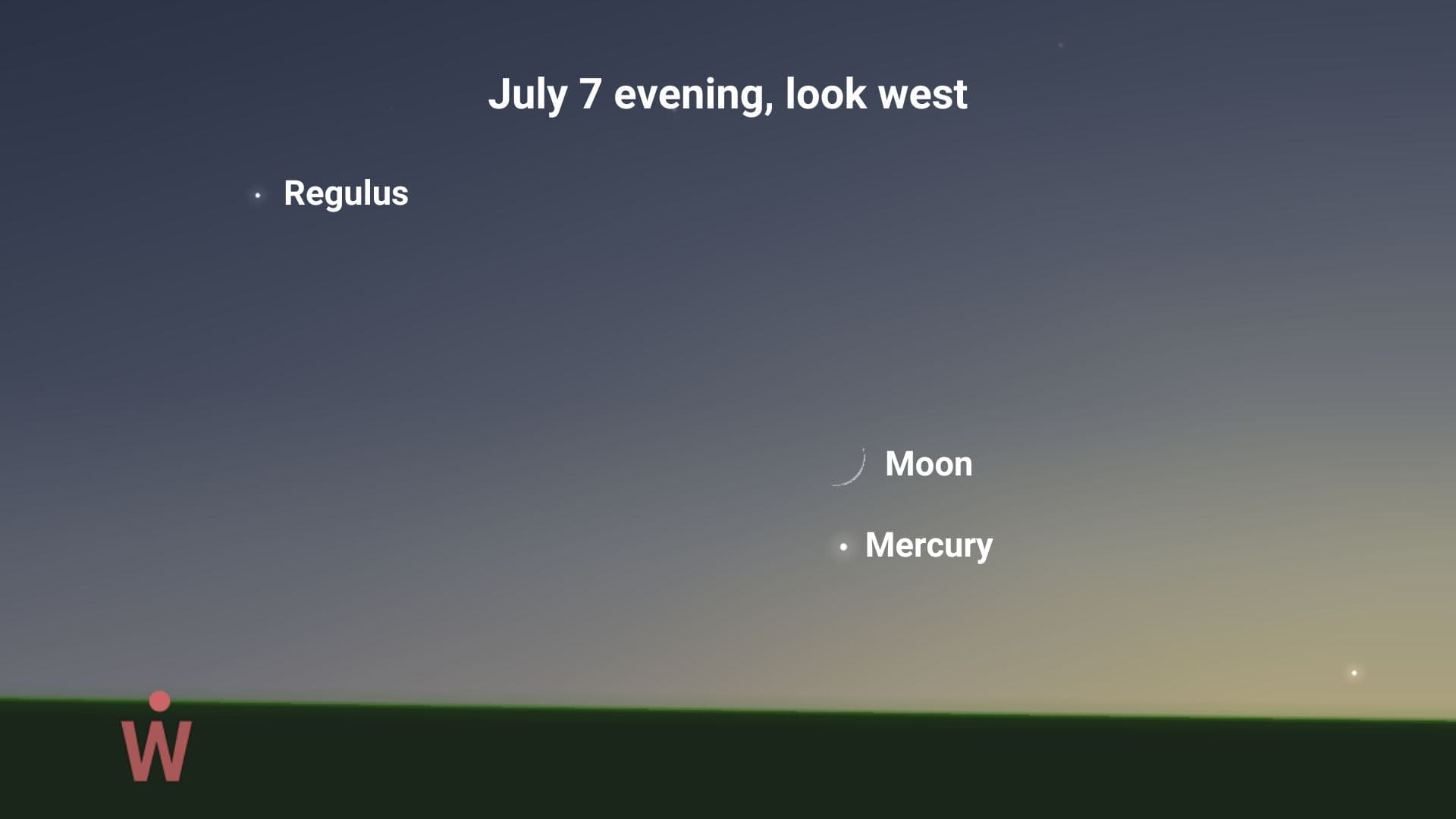
Mercury will be visible very close to the 4% illuminated waxing crescent moon on the evening of July 7, 2024.
The moon and Mercury will set together in the early evening of July 7, 2024. So look in the evening twilight to see the moon and Mercury nearby.
Mercury will be easier to spot in the southern hemisphere than in the northern hemisphere for this evening apparition.
In the southern hemisphere, it will remain a decent height above the horizon after sundown due to the higher slope of the ecliptic.
You need a self-guiding telescope to see the phase of Mercury. On this day, Mercury will be in its waning gibbous phase and 67% illuminated.
Saturn next to the moon on the mornings of July 24 and 25
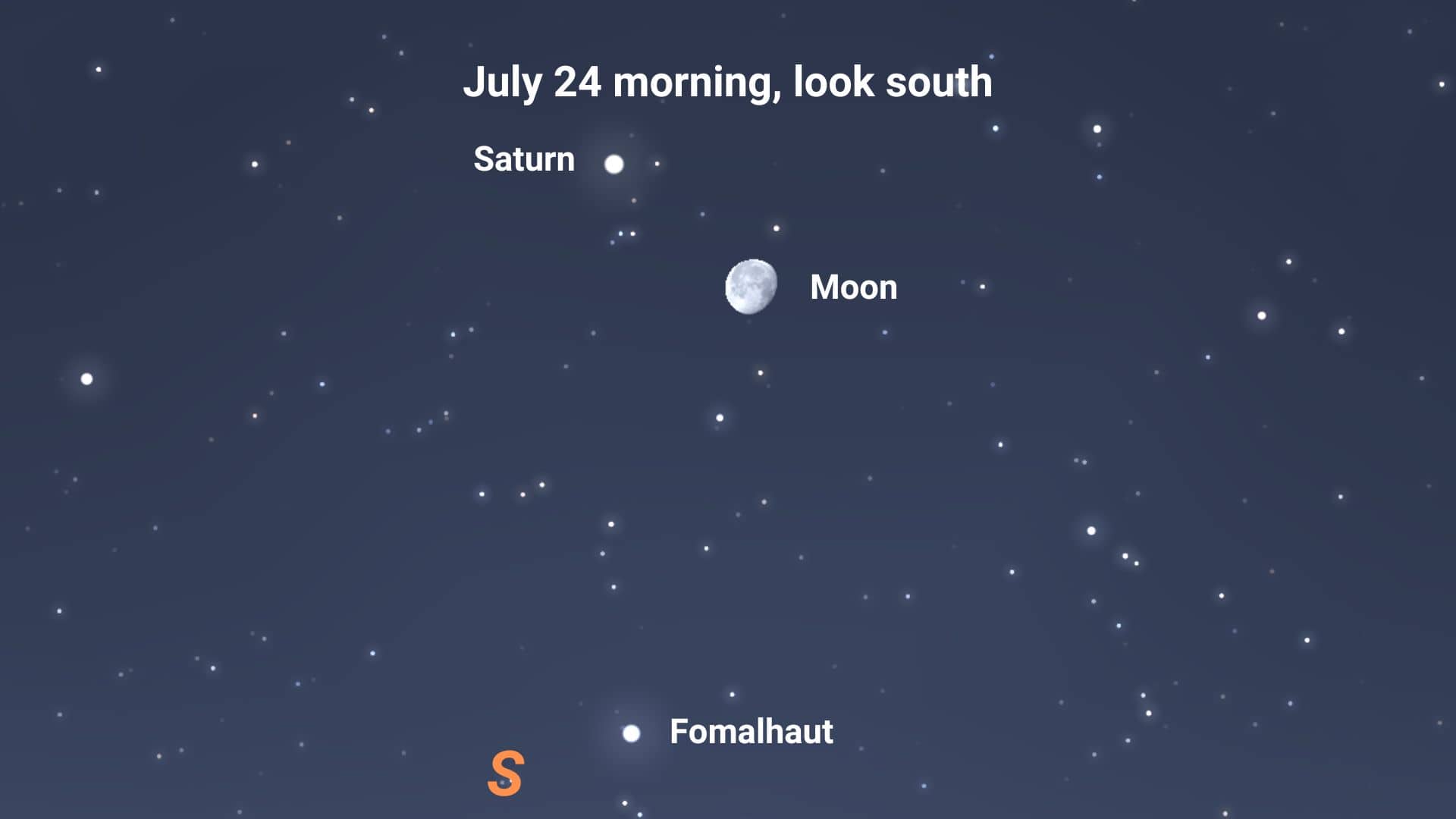
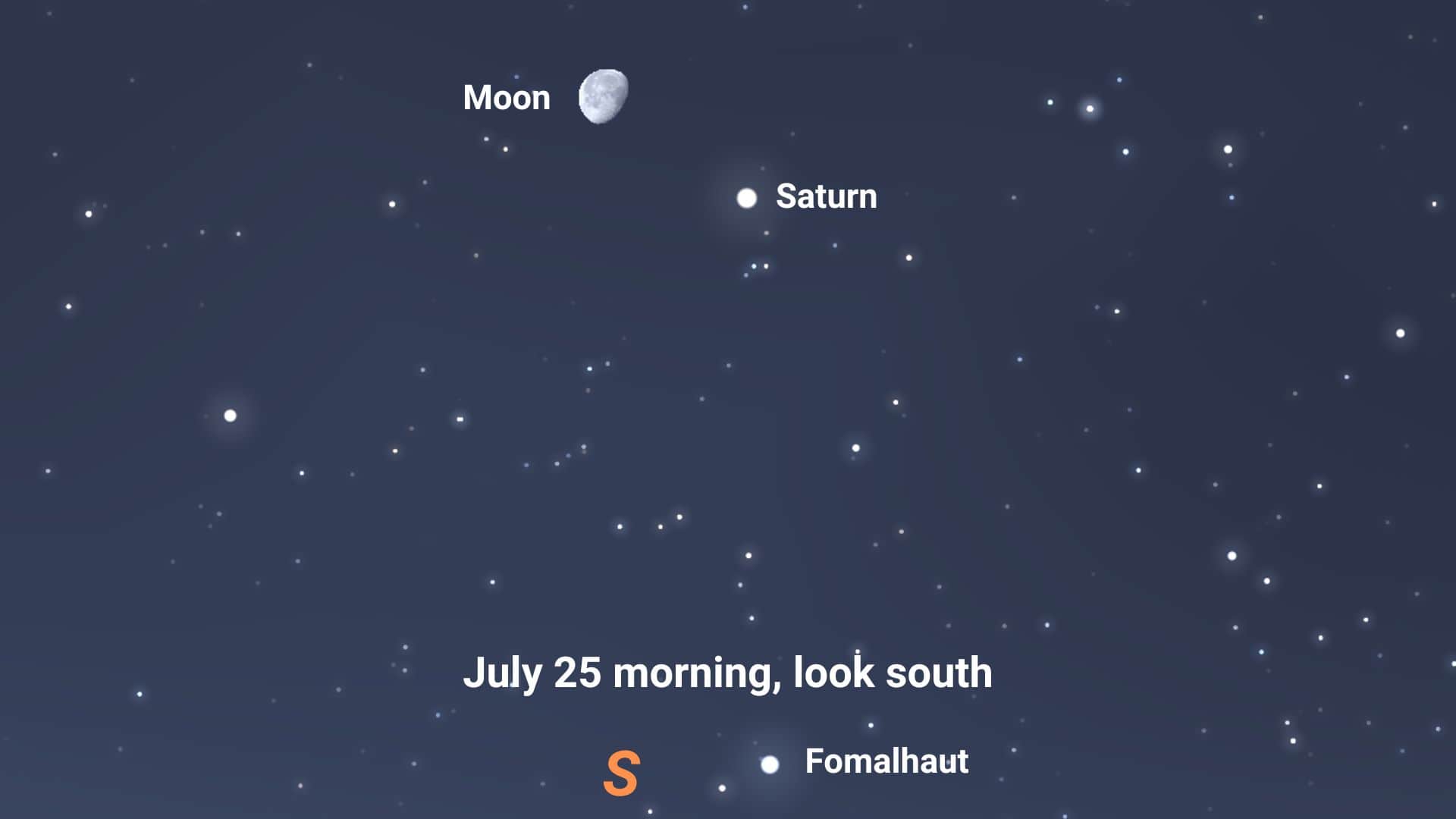
Saturn will be visible to the upper left of the waning gibbous moon on the morning of July 24 and to the lower right of the waning gibbous moon on the morning of July 25, 2024.
On these days, the moon and Saturn will rise together in the mid-evening and set together in the morning. So look in the southern sky in the early morning hours preceding sunrise to see the moon and Saturn.
Saturn looks golden in the sky because its rings reflect more sunlight due to their high phase angle.
The loneliest star in the southern sky, Fomalhaut, will be seen below the moon and Saturn on the mornings of July 24 and 25, 2024.
Please bookmark Spaceandtelescope.com or follow us on Facebook and Twitter to get latest space news, upcoming skywatching events and astronomy-related content.
